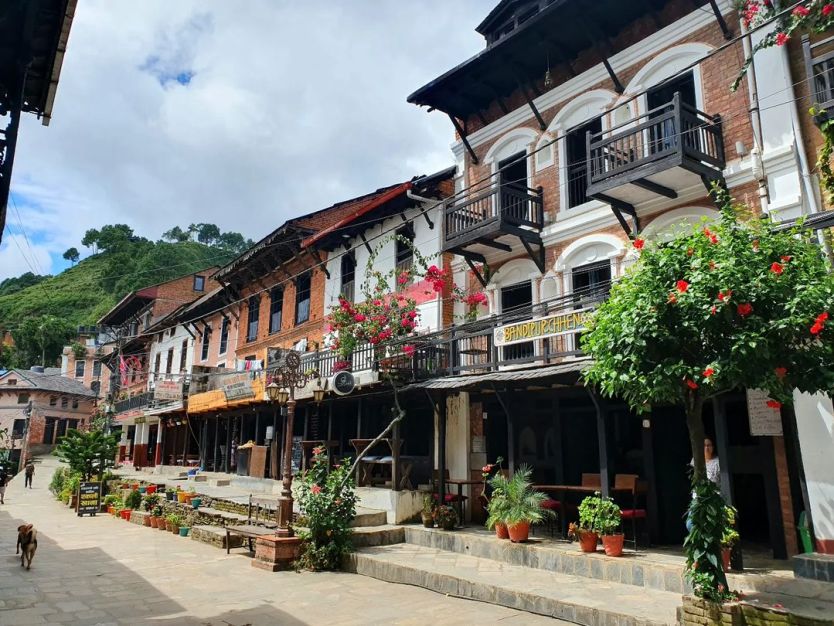Nepal, a country known for its towering mountains and deep valleys, offers an exceptional range of hill stations that captivate the hearts of travelers worldwide. Nestled among the Himalayas, these high-altitude retreats are perfect for those seeking peace, adventure, and unparalleled beauty. This article delves into the most popular hill stations in Nepal, each offering a unique blend of culture, nature, and adventure.
Nepal’s hill stations are an integral part of its natural beauty. They offer an oasis of tranquility amid the country’s rugged terrains and lush landscapes. The allure of these stations lies not only in their breathtaking views of the Himalayas but also in the serenity they provide, away from the hustle and bustle of city life. For nature lovers, photographers, trekkers, and even spiritual seekers, Nepal’s hill stations serve as the perfect escape.
Nagarkot
Spectacular sunrise views
Nagarkot is one of the most famous hill stations in Nepal, renowned for its incredible sunrise views. As the first light touches the snow-capped peaks of the Himalayas, a surreal golden glow envelops the mountains, creating an unforgettable sight. Visitors flock to Nagarkot to witness the sunrise over the majestic Mount Everest and surrounding peaks.

Trekking and outdoor activities in Nagarkot
Beyond its breathtaking views, Nagarkot also offers a variety of outdoor activities. Hiking through lush forests and small villages provides an opportunity to connect with local culture. The Nagarkot Panoramic Hiking Trail is particularly popular among trekkers, offering a pleasant blend of natural beauty and cultural insights.
Pokhara
Scenic beauty and the famous Phewa Lake
Pokhara is a paradise for nature enthusiasts, with its stunning landscapes and serene ambiance. The city is home to Phewa Lake, a shimmering body of water surrounded by lush green hills and towering mountains. The reflection of the Annapurna range in the lake’s still waters creates an image of serenity and beauty that has become iconic.

Adventure activities in Pokhara
Pokhara is not only a place for relaxation, but it is also an adventure hub. The city is renowned for paragliding, trekking, and boating. The treks to the Annapurna Base Camp and the Poon Hill trek are popular routes for trekkers, while the adrenaline rush of paragliding over the lake is unmatched.
Bandipur
The preserved cultural heritage of Bandipur
Bandipur is a beautifully preserved hill station, rich in history and cultural significance. This small town offers a glimpse into the traditional way of life in Nepal, with its centuries-old architecture and cultural heritage. The stone-paved streets and wooden houses create a charm that takes visitors back in time.

Best time to visit Bandipur
The best time to visit Bandipur is during the autumn and spring seasons, when the weather is pleasant and the views of the Himalayas are unobstructed. The vibrant festivals of Bandipur also add a layer of cultural richness to the visit, making it an ideal destination for history and culture lovers.
Daman
Panoramic views of the Himalayas from Daman
Daman, located in the Makwanpur district, offers one of the most panoramic views of the Himalayan range in Nepal. From the viewpoint, visitors can witness the majestic peaks of Mount Everest, Langtang, and Annapurna. It is a perfect destination for those who wish to enjoy unobstructed views of the world’s highest mountain range.
Daman’s attractions beyond the view
While the view is the primary draw, Daman also offers nature walks, bird watching, and visits to nearby villages. The tranquility and fresh air in Daman make it an ideal destination for relaxation and rejuvenation.
Tansen
The historical charm of Tansen
Tansen, located in the Palpa district, is known for its rich history and cultural heritage. The town features beautiful ancient temples and traditional Newar architecture. The Tansen Durbar, a historic palace, is a central attraction, and the town’s narrow lanes exude a nostalgic charm.
Trekking and cultural experiences in Tansen
Trekking around Tansen provides scenic views of the surrounding hills and valleys, while immersing in local culture. The unique cultural festivals and events make Tansen an appealing destination for travelers seeking both adventure and heritage.
Ilam
The tea gardens of Ilam
Ilam is renowned for its sprawling tea estates, where the landscape is marked by endless green hills. The tea plantations, combined with the cool climate, make Ilam one of the most picturesque hill stations in Nepal. Visitors can explore the tea gardens and enjoy the serene atmosphere that these rolling hills provide.
Cultural and natural attractions in Ilam
Ilam’s cultural significance lies in its diverse communities and festivals. The town is also home to several natural attractions like the Kanyam and Fikkal areas, which are perfect for short hikes and nature walks. The peaceful atmosphere and scenic beauty of Ilam make it a perfect retreat for travelers.
Gosaikunda
Spiritual and natural significance of Gosaikunda
Gosaikunda is a sacred lake located in the Langtang National Park. For Hindus, it is believed to be the abode of Lord Shiva, making it an important pilgrimage site. The stunning backdrop of snow-capped peaks and the tranquil lake add a spiritual aura to the region.
The trek to Gosaikunda
The Gosaikunda trek is a challenging yet rewarding experience for trekkers. It offers a perfect combination of natural beauty, spiritual significance, and adventure. The trek takes visitors through dense forests, alpine meadows, and remote villages, culminating in the serene, high-altitude lake.
Lalitpur (Patan)

Patan’s rich cultural history
Lalitpur, also known as Patan, is an ancient city known for its rich cultural history and architectural marvels. The city’s Durbar Square is a UNESCO World Heritage site, home to centuries-old temples and sculptures that reflect Nepal’s artistic and religious heritage. The city is a hub of Newar culture and is renowned for its craftsmanship.
Best spots for tourists in Lalitpur
Apart from the Durbar Square, Patan is also home to the Hiranya Varna Mahavihar, Mahabouddha Temple, and the Golden Temple. The vibrant streets and bustling markets offer a perfect blend of history, art, and local life.
Sundarijal
The trekking trails and waterfalls of Sundarijal
Sundarijal, located on the outskirts of Kathmandu, is a popular trekking destination known for its scenic trails and waterfalls. The Sundarijal Waterfall is a highlight of the area, drawing both trekkers and nature enthusiasts who wish to explore its tranquil surroundings.
Exploring the natural beauty of Sundarijal
In addition to the waterfall, Sundarijal offers serene landscapes and peaceful trails that lead through dense forests and alongside rivers. It is a great destination for a quick escape from the bustling capital and offers an easy retreat for short treks.
Rara Lake
A hidden gem in the Himalayas
Rara Lake, located in the far western region of Nepal, is one of the most remote and serene destinations in the country. The lake is surrounded by snow-capped peaks, and its crystal-clear waters make it a hidden gem for nature lovers and trekkers alike.
Trekking to Rara Lake
The trek to Rara Lake is a challenging yet mesmerizing experience. It takes trekkers through rugged terrains, remote villages, and dense forests, with each step revealing more of the stunning landscape. Reaching the lake is a rewarding experience that offers a rare sense of solitude and tranquility.
Conclusion
Nepal’s hill stations are diverse in their offerings, from peaceful retreats with majestic views to culturally rich towns steeped in history. Whether it is the panoramic views from Daman, the adventure-filled days in Pokhara, or the cultural wealth of Lalitpur, each hill station offers something unique. These destinations, tucked away in the Himalayan foothills, are perfect for anyone seeking a combination of natural beauty, adventure, and cultural exploration. For travelers, these hill stations are not just destinations but experiences that last a lifetime.
Discover more from Nepal Travel Vibes
Subscribe to get the latest posts sent to your email.




You must be logged in to post a comment.